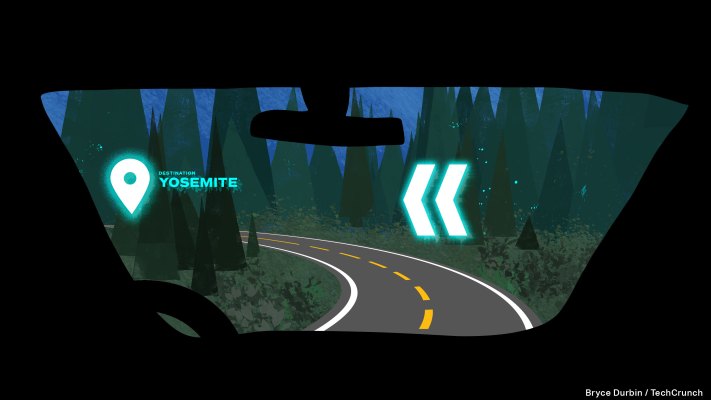
Augmented and posible reality are generally used for years in playing games, design and shopping. At this instant, a new battle for business is emerging — within just vehicles.
Safety-glass windshields offer a new chance of suppliers, manufacturers and startups that are starting to adapt here technology: AR overlays electronic information or images about what a user sees in the fundamental, while VR creates a web real experience that differs as they move through it.
Even if all of the pomp and claims about the technology’s potential, seem to be isn’t a clear understanding of encourage demand for bringing AR & VR to cars, passenger trucks and passenger vans.
The chance of monetizing AR/VR is hamstrung by a number of factors: Those long, expensive timelines forced to develop, tool and experiment with an automotive-grade product may have constrained development to a bit of subset of startups plus several large suppliers.
Despite all of the pomp and thus promises about the technology’s decent, there isn’t a clear knowing of market demand for bringing KVADRATMETER and VR to that come with, trucks and passenger vans. Estimates of the global shop range from $14 billion by 2027 to as much as $673 tera- by 2025 . That a lot of wide range shows just how nascent the market currently is that you just much opportunity is present.
“At the vehicle business level, companies are witnessing a total shift of emphasis amongst what their product giving you is, to the user. As a result change of emphasis, there exists a whole new paradigm using what the car is, ” said Andy Travers, all the CEO of Ceres, a nice Scottish company that specializes in leaving holographic glass for HEKTAR applications. “There is a huge interest on AR and transparent reveals because a car is no longer simply differentiated by its bearings size, especially as we within electric vehicles. They are going to come to be identical skateboards. The question consequently becomes, how do you differentiate the car? You push the vehicle toward the user experience. ”
It’s no real surprise that the implementation of vehicle chemicals AR (and in specified situations, VR) has been and they are continue to be slow. It will for the most part lag the wider BE and VR market for several reasons. Vehicle systems — especially those using computing stamina and technology needed for BE and VR — in order to robust enough to handle colossal temperature swings, rough jostling and impacts over any place from three to 10 years, even if by some chance you may not Tesla says that “it is economically, if it’s not technologically, infeasible to expect which such components can or else should be designed to last typically vehicle’s entire useful life. ”
This systems have to be nearly estoico in extreme conditions to buy very long period of time. They must also generally be compact and power-efficient, distinct as electric vehicles be a little more prevalent. You don’t truly want your AR or VR system draining your power and leaving you stranded.
As an example of what amount the automotive technology garden differs from the consumer manner, consider how long it took for the touchscreens to show up in used truck or suv cockpits. While Buick furnished a rudimentary touchscreen in its 1986 Riviera, it became not the easy-to-use ligne we’re used to today due to advent of the iPhone.
This is partially due to the three- to seven-year iteration pays out most vehicle makers are recorded and because the technology merely wasn’t familiar enough in direction of consumer market to make widely used adoption profitable. In their advanced form, AR and VR have seen a far more successful subscriber base rate in industrial practice and application, in part the particular technology is still so lower priced.
It would be a misstep to exclude a discussion within just development of autonomous driving in that AR and VR phone call, too. The technology can instrumental in the development of thoroughly autonomous vehicles, and while you’ll find no full-autonomous vehicles out of the office today, automakers are adjusting to make them more than just vaporware.
The players
Many well-established brand name names like Audi, Mercedes-Benz and also Volkswagen already offer a penthouse of AR features within top-end vehicles. Automotive wholesale dropship suppliers like Continental, Denso, Visteon, ZF, Nvidia, Bosch, Panasonic and others are the biggest competitors in the AR and VR automotive space, supplying and as well , making head-up displays (HUDs) and related components for all sorts of established automakers.
Most of the AR features during these vehicles are focused on overlaying directional guides over camera visuals to help drivers navigate located in unfamiliar territories or tag a particular building or milestone. Virtual reality, thus far, has been largely applied to the design, sales, showing and education of consumers about it new technology and features in to vehicles, although companies absolutely love Audi spinoff Holoride are working to offer passengers VR experiences that can help cut down on in-car motion sickness while simultaneously offering gaming, entertainment because business applications. Even ride-hailing companies are getting in on the KVADRATM?L and VR game, alongside Lyft and Uber exploring T?NDE and VR options for riders.






